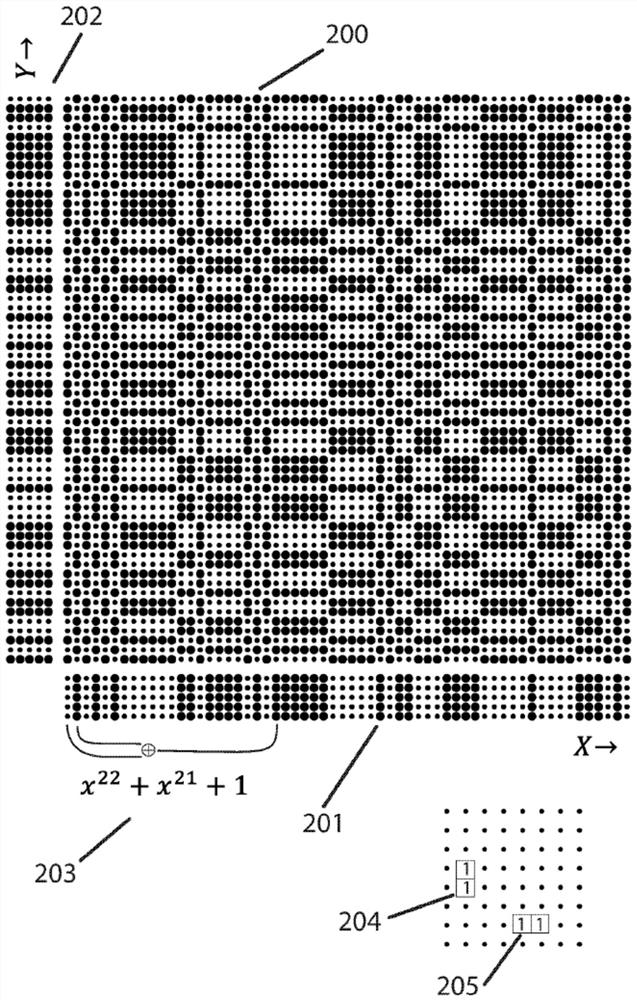Multi-axis position sensing system
A sensing system, coding system technology, applied in the direction of sensing record carrier, data representation error detection/correction, error correction/detection using linear code, etc., to achieve the effect of high frame/sampling rate
- Summary
- Abstract
- Description
- Claims
- Application Information
AI Technical Summary
Problems solved by technology
Method used
Image
Examples
Embodiment Construction
[0067] decoding process
[0068] exist Figure 7 A preferred embodiment of the decoding pipeline from scale 100 to position output is described in , and is now disclosed in terms of the order of the flow.
[0069] Scale symbol representation and implementation
[0070] In the figures, the preferred halftone representation of a digit is depicted with a dot area proportional to the digit value. When imaging, this translates to a grayscale spread over several pixels, and later when those pixels are properly resampled and integrated, to a number that closely correlates to the original digital value. Dots have the advantage of being constant when rotated and easy to print, but it should be noted that any convenient pattern can be used, including but not limited to lines, squares, overprinted inks with subtractive overlay properties, multi-dot symbols, or full grayscale Patterns, all of the above fall within the scope of the present invention. The XOR combination produces an arr...
PUM
 Login to View More
Login to View More Abstract
Description
Claims
Application Information
 Login to View More
Login to View More - R&D
- Intellectual Property
- Life Sciences
- Materials
- Tech Scout
- Unparalleled Data Quality
- Higher Quality Content
- 60% Fewer Hallucinations
Browse by: Latest US Patents, China's latest patents, Technical Efficacy Thesaurus, Application Domain, Technology Topic, Popular Technical Reports.
© 2025 PatSnap. All rights reserved.Legal|Privacy policy|Modern Slavery Act Transparency Statement|Sitemap|About US| Contact US: help@patsnap.com



